This
write-up explains given the picture below how to construct a point X on
segment AC and a point Y on segment BC such that the lengths of AX, XY,
and YB are equal.

To
begin the construction we will pick a random point X' on the segment AC
and use this point to construct segments AC' and C'B' and point Y' such
that the lengths of segments AX', X'Y', and Y'B' are equal. We can then
project point Y' onto segment CB to find point Y and use point Y to construct
point X on AC.
To
reiterate, we begin by constructing point X' on segment AC.

Next,
we construct segment AB.

Construct
a circle with center X' and through the point A.

Construct a line
through X' and parallel to segment CB.

Find
the intersection of the newly constructed line and the circle X'.

Construct
a circle with center the intersection of the line and circle and through
point X'.

Find
the intersection of the newly constructed circle and the segment AB.

Construct a line
through this intersection and parallel to the line segment CB.
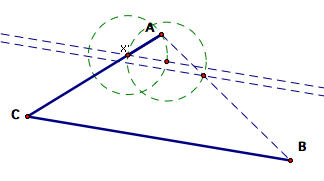
Find
the intersection of the new line and the original circle. Note that there
are two intersections but in this case we want the intersection on the
right side of the circle. This choice will be of particular interest later
in the write-up.
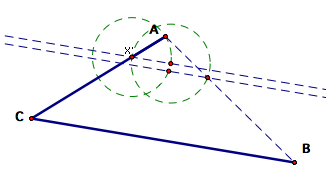
Connecting these
four points we create a rhombus. Note that if we had chosen the other
intersection in the previous step, we would not have
a rhombus. We know that this is a rhombus because three sides are radii
of the two circles and the circles were constructed to have the same radius
and one pair of sides is parallel by construction. This means the fourth
side must be of the same length and parallel to the side opposite it.
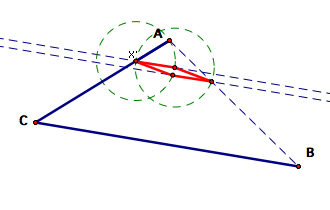
In
addition, we have now created our C', B', and Y' such that the lengths
of AX', X'Y', and Y'B' are equal (they are each the radius of one of the
circles and the circles were constructed to have the same radius).
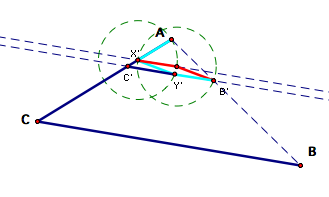
We will now construct
a line through A and Y'. Where this line intersects CB will be the point
Y.
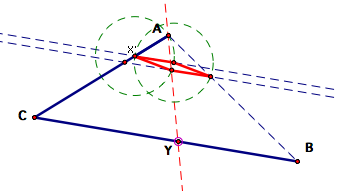
Because
we want to construct a similar figure, we will construct a line through
the point Y and parallel to the line X'Y'.
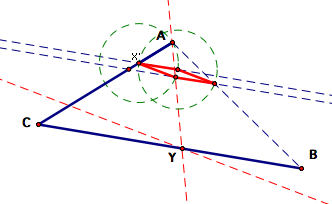
Where
this line intersects the segment CA is the point X. Measuring the segments
XA, XY, and YB shows that we have succeeded in constructing the desired
points X and Y in this particular case.
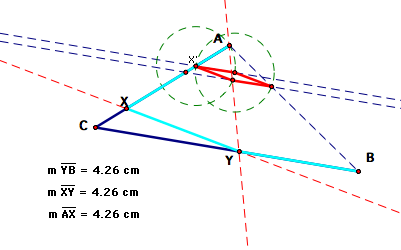
By constructing
a line through X and parallel to CB, and a line through B and parallel
to XY, we can find the rhombus in this situation.
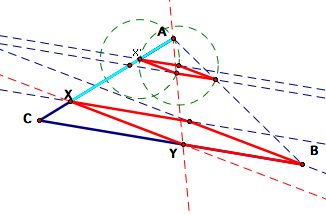
We can verify that
this structure is a rhombus by constructing centered at Y and B and both
with radius XY.
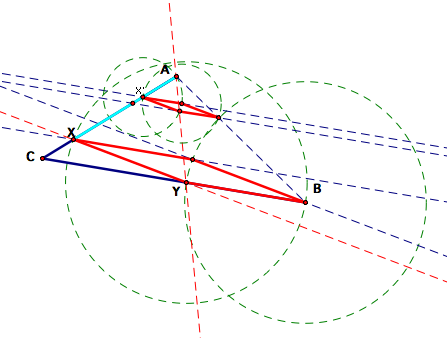
We
have successfully completed the construction of points X and Y in this
situation, but we would like to know that this construction will work
in all situations. Unfortunately, it does not. If we drag A far enough
to the right, the segments AX, XY, and YB are no longer of equal length--as
shown below.
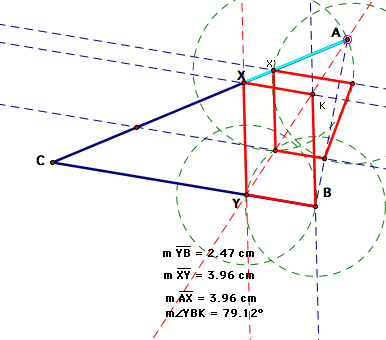
It appears that
the current construction does not work once A moves to the right of B--or
that it works as we move A to the right up until the point the rhombus
becomes a square.

To explore this
situation further, I began the construction again, but this time began
with a picture where A was to the right of B. In this situation, when
we reach the point of choosing the intersection of circle F (below) and
the line through points E and G, we choose the intersection on the left
to create our rhombus. In the previous construction, we chose the intersection
on the right.
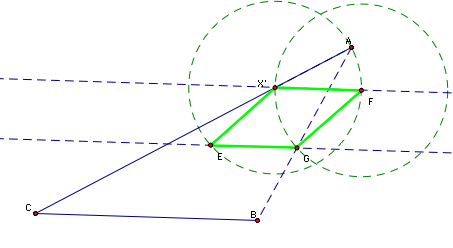
This procedure
again allows us to identify Y' (E below).
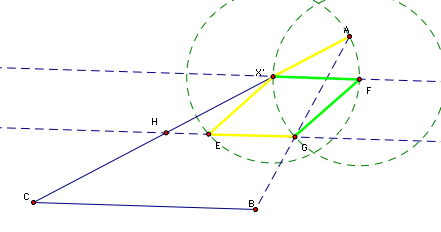
And use the
line through A and Y' (E below) to locate Y. This time, I used a circle
centered at Y through B to locate X. This technique also allowed me to
correctly identify the desired X and Y in this situation as verified by
the measurements below.
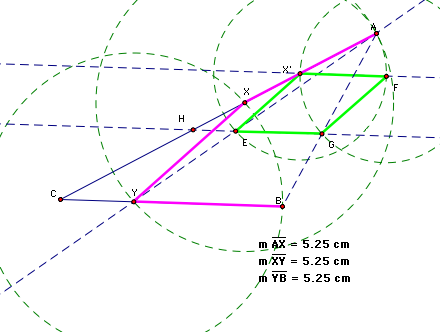
Using this construction,
when A moves to the left of B, the segments AX, XY, and YB are no longer
of equal length and our figure is no longer a rhombus.

It seems
that which intersection forms a rhombus changes depending on whether A
is to the left or right of B initially. If A is directly above B, we will
have a square, the circle will be tangent to the line and we will only
have one point of intersection. |























